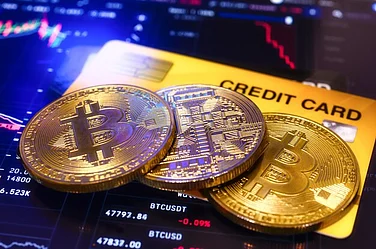While the crypto ecosystem has expanded rapidly, such innovation begets new sets of risks. Of the more critical threats that one may face today in this crypto sphere, there is Token Imitation Poisoning-a totally deceptive method it uses to manipulate user trust, interface design, and wallet behavior. Most users are familiar with common scams, such as phishing or rug pulls, but Token Imitation Poisoning can be harder to detect because it plays with probably the most basic element of Web3 interactions: your wallet address.
This attack is part of a broader category known as Address Poisoning crypto, wherein scammers manipulate or spoof wallet addresses to have users send funds to the wrong destination. Token Imitation Poisoning is among the most dangerous variants of that tactic.
Understanding the Concept: What is Token Imitation Poisoning?
Token Imitation Poisoning refers to a type of malicious attack whereby scammers generate fake tokens that are similar to existing tokens in your wallet, but with a similar name, symbol, or appearance. The scammer sends the counterfeit tokens to your address in order to make misleading information appear in your wallet.
This is to achieve one thing:
So that you accidentally interact with, or send funds to, the attacker's address.
The attack relies on the user's habit of copying addresses from recent transaction history, as most do when sending funds to frequently used wallets or exchanges. Since the scammer has inserted a transaction with a fake token or imitation transfer, their poisoned address gets mixed in with your recent interactions.
Because this method integrates so well with your wallet interface, many users remain unaware that they have been targeted until funds go missing.
How Token Imitation Poisoning Works: Step-by-Step Breakdown
Token Imitation Poisoning usually resembles:
The attacker generates a wallet address similar to yours or one that you regularly use.
They create a fake token that resembles the name or symbol of some valid cryptocurrency. Example:
"USDT" should be "USDT.” (with a period)
"ETH" can be written as "eTH,
“WBTC” can be copied with a slight Unicode alteration.
The attacker, using a fake token, sends a zero-value or tiny transaction to your wallet.
Your wallet now shows this transaction in your “recent activity.”
You might copy the poisoned address when you need to make a transfer, assuming it's one that you've dealt with before.
The funds end up going directly to the attacker.
This phishing attack forms a part of the greater trend in Address Poisoning in crypto, where scammers rely on visual distractions, address similarities, and user confirmation habits to execute scams.
Why does token imitation poisoning work so easily?
One reason: human behavior.
Most users don't memorize full wallet addresses since they are long and complex. As such, they identify the start and end characters. Scammers generate look-alike addresses based on this trend.
Additional:
Most wallet applications only provide a limited preview of addresses.
The fake tokens would probably carry identical logos and just about similar symbols.
Zero-value transactions appear to be valid because they resemble real interactions.
This makes for a perfect environment of deception. Token Imitation Poisoning is not a technical attack against blockchain networks; it's a social engineering attack delivered through blockchain mechanics.
This attack also joins the growing list of threats involved with Address Poisoning crypto, showing just how dangerous visual mimicry schemes have become.
The Real-World Impact: Are Users Losing Money?
Worldwide, consumers report losses ranging from a few dollars up to several thousands; this is often due to the fact that:
They trusted familiar-looking addresses
Instead, they copied from wallet history, not saved contacts.
They missed the subtlety that is involved in naming tokens.
Because the blockchain is irreversible, funds lost to an incorrect address are never recoverable. For that reason, understanding Token Imitation Poisoning-and the wider crypto threat of Crypto Address Poisoning-is crucial for anyone operating in the sphere of crypto transactions.
How to Identify Token Imitation Poisoning
While the scheme is subtle, you can detect it with careful attention:
1. Token Detail Check
Click on the token to see:
Contract address
Number of decimal places
Token creator
Most fake tokens make use of obscure contracts or newly created addresses.
2. Beware of zero-value transactions
These are major red flags. Most legitimate transfers contain value or gas fees.
3. Token logos and spelling verification
Fraudsters typically use:
Unicode characters
Extra dots or spacing
Duplicate logos
4. Avoid copying addresses from wallet history
And that's just what scammers are hoping you will do.
Instead:
Use saved contacts
Double-check the complete address
Scan QR codes from trusted sources
These habits greatly minimize the possibility of Address Poisoning crypto tactics.
How to Protect Yourself from Token Imitation Poisoning
Fortunately, it's not complicated to protect yourself. You simply have to practice strong transaction hygiene.
1. Save frequently used addresses
Wallets and exchanges are capable of address saving. Use it for:
Friends
Exchanges
Cold wallets
Business payments
2. Check the contract information
Before interacting with a token,
Verify via official websites
Please check on CoinGecko or CoinMarketCap: Verify with blockchain explorers
3. Ignore Unknown Tokens in your wallet
Receiving a token does not grant a person access to your wallet, so you should not be concerned about that. Just don't interact with fake tokens: even viewing details is safe, but approving or swapping them is dangerous.
4. Use wallet features that include address verification.
Hardware wallets will often show the full address on the screen of the device—utilize that.
5. Educate your team or family
If you manage the company's funds or help others in connection with crypto, raise awareness. Knowledge is your best defense against crypto address poisoning attempts.
Conclusion:
Staying Safe in an Evolving Crypto Landscape Token Imitation Poisoning is an advanced but avoidable scam. It does not attack blockchain technology; it attacks user attention and trust. Understanding how scammers mimic tokens and poison transaction histories will keep you secure even as threats evolve. Token Imitation Poisoning simply explains the importance of validating every transaction without any shortcuts in the wider ecosystem of Address Poisoning in crypto attacks. Crypto, after all, provides power to the user, but where there is power, there comes responsibility. Simple things one can do to save oneself from huge losses include saving addresses, verification of tokens, and observation for zero-value transactions. Being informed is the first step toward being safe.
FAQs
1. Is Token Imitation Poisoning a hack?
No. It's a type of fraud, not a hack technically. It doesn't compromise your wallet; fraudsters use visual tricks to deceive you.
2. Can a fake token steal my crypto?
No, just being sent a token cannot drain your wallet; the risk is in mistakenly sending funds to a poisoned address.
3. How does this relate to Address Poisoning in crypto?
Token Imitation Poisoning is one variation of Address Poisoning in crypto in which users are cheated with look-alike addresses and fake tokens into making wrong transfers.
4. Can the money be recovered if it is sent to the wrong address?
Unfortunately, no. Blockchain transactions are irreversible.
5. What do I do if I see suspicious tokens?
Ignore them. Do not swap, approve, or interact with them whatsoever.




















